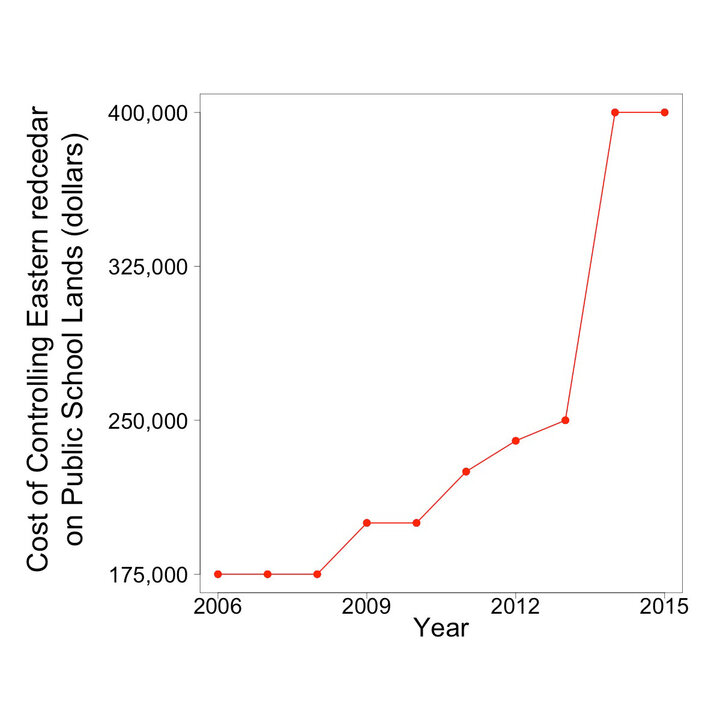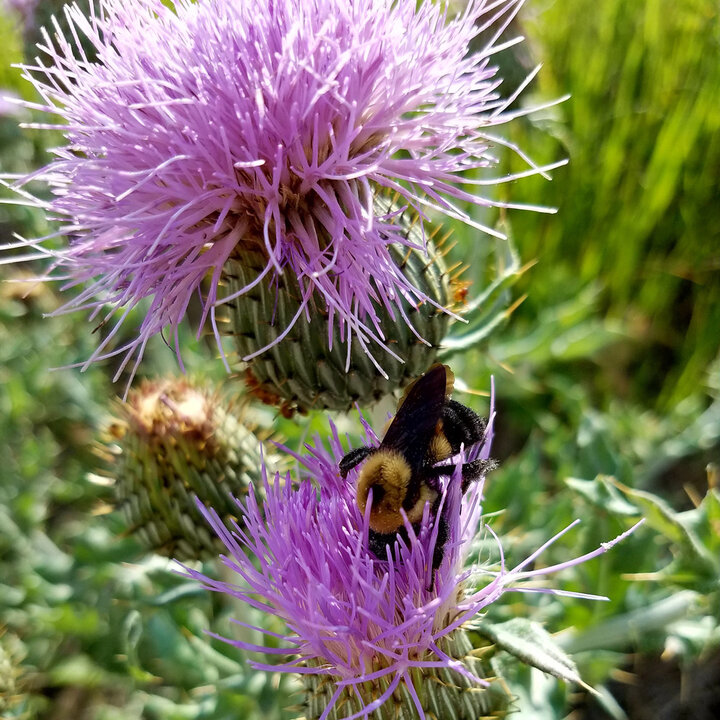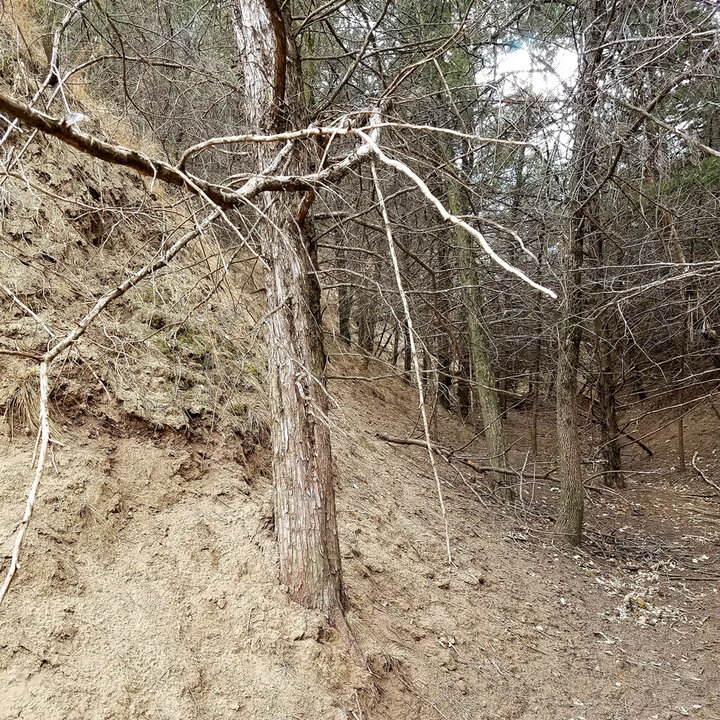The impacts of cedar invasion were first documented by scientists in 1940 (soils), followed by impacts on livestock production (1973), and more recently broad impacts to society (water = 2005; wildfire = 2013; public education funding = 2016). Scroll down to learn more about the impacts of grasslands transforming to closed-canopy juniper woodland. Direct quotes from the scientific literature that form the basis for each synthesis point can be found at Supporting Details.

Figure from Lally et al. (2016).
Social Costs
- Livestock production decreases by 75%.
Read more
- Eastern redcedar threatens funding for public education in Nebraska. From 2006-2016, Nebraska Public Schools lost over $2,440,000 to expenditures on eastern redcedar control. Particularly concerning is the increasing costs of control over time. Annual expenditures for cedar control have increased by $250,000 since 2006 for the Nebraska Board of Educational Lands and Funds, whose entire revenue from grazing leases (over 950,000 acres) goes directly to Nebraska Public Schools.
Read more
- Wildfire risk increases. Flame lengths observed during eastern redcedar combustion can be more than 35 feet above what is considered suppressible by the US Forest Service.
Read more
- Increased threat to freshwater supply. A number of studies have demonstrated that eastern redcedar invasion alters hydrological dynamics in grasslands, often resulting in reduced streamflow, aquifer recharge rates, and soil moisture. Impacts to water supply are expected to differ across regions, depending on local hydrology and climate.
Read more
- Increased threat of vector-borne disease transmission. Recent studies in Oklahoma show a higher prevalence of tick and mosquito-borne diseases like West Nile virus in grasslands that have experienced encroachment by eastern redcedar compared to un-encroached grasslands.
Read more

Biodiversity and Productivity
- Grassland birds are one of the most sensitive guilds to eastern redcedar invasion. Scientific evidence indicates the majority of species are no longer present in areas where eastern redcedar cover exceeds 10%. Prairie chickens are even more sensitive, with documented declines occurring at low levels of increased cedar cover (between 2% - 5%).
Read more
- Multiple lines of evidence show grassland birds are being displaced by generalist birds and woodland/shrubland birds.
Read more
- Very few plants grow underneath eastern redcedar. One of the more rigorous studies showed grassland species richness declined 88%. Herbaceous productivity declines 70%-99% in grassland areas converted to closed-canopy juniper woodland. Read more at Herbaceous Plant Composition and Herbaceous Production.
- Initial scientific evidence suggests that eastern redcedar reduces the abundance of most beetle species, including the Federally Endangered American burying beetle.
Read more
- The majority of small mammal species are no longer present when eastern redcedar cover in grasslands exceeds 30%.
Read more
- The white-footed mouse is typically the only small mammal species present in closed-canopy eastern redcedar forest.
Read more

Biophysical
- Carbon storage shifts from primarily below ground in grasslands (~96%) to primarily aboveground in eastern redcedar stands (~52%). Although total C storage increases in eastern redcedar-invaded areas, the shift from belowground to aboveground C storage increases the likelihood of rapid losses in aboveground C following disturbance (e.g. drought, wildfire, disease, insect outbreaks).
Read more
- Soil moisture is reduced on sites with relatively flat terrain, however, may increase on sites with hilly terrain that allows water runoff to reach the soil surface under eastern redcedar.
Read more
- The high calcium content of eastern redcedar litter raises soil pH of acidic soils.
Read more
